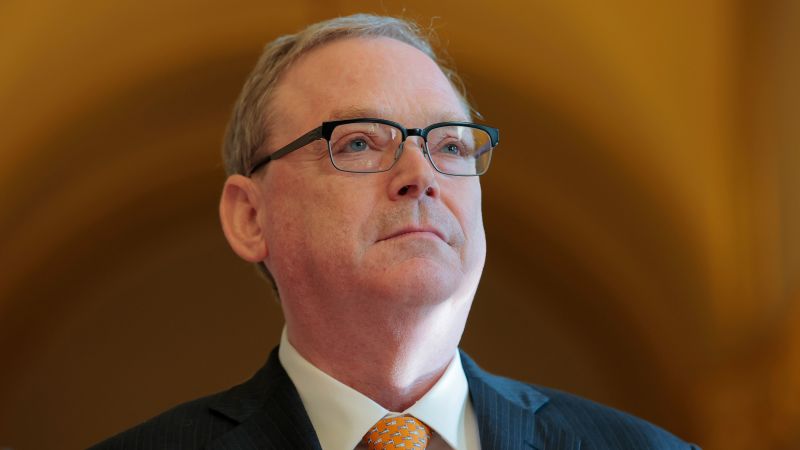In recent developments regarding the trade relations between the United States and China, National Economic Council Director Kevin Hassett expressed optimism about achieving a trade deal during the upcoming meeting set in London. Speaking on CBS’s “Face the Nation,” Hassett conveyed his confidence about the ongoing negotiations, especially following a promising dialogue between President Donald Trump and Chinese leader Xi Jinping. This bilateral discussion suggested that the negotiations were “very far advanced,” setting a hopeful tone ahead of the anticipated talks.
A significant aspect of the trade negotiations revolves around the restoration of trade, specifically concerning rare earth minerals. These minerals are critical for the manufacturing of various electronics, and Hassett indicated that the U.S. aims to restore the flow to previous levels seen before the trade tensions escalated in April. The United States is experiencing gradual increases in the exports of these important minerals but has yet to reach the desired agreements made in Geneva, highlighted by Hassett’s commentary.
To spearhead the negotiations, Commerce Secretary Howard Lutnick, along with Treasury Secretary Scott Bessent and U.S. Trade Representative Jamieson Greer, who previously conducted the talks in Geneva, will be leading the discussions in London. Despite this organized effort, the relationship faced new strains after President Trump alleged that China had “totally violated” the terms of a 90-day trade agreement, which had previously eased some trade tensions by reducing tariffs on both sides.
The agreement initially resulted in the U.S. lowering its overall tariffs on Chinese goods from a striking 145% to 30%, while simultaneously, China reduced levies on U.S. imports from 125% to 10%. Under this deal, China committed to suspending or canceling its non-tariff countermeasures it had enforced in retaliation since April, which included crucial restrictions on rare earth minerals that are vital for technology products, electric vehicles, and military equipment.
In a broader context, the Trump administration had implemented reciprocal tariffs on several trading partners, pausing them for an initial 90-day period and leading to discussions on maintaining a 10% baseline. Hassett noted that while some level of tariffs would be essential moving forward, details on potential future tariffs remained undisclosed as discussions continue under the looming July 9 deadline.
Interestingly, in a separate interview, Lutnick stated that the administration is unlikely to drop the tariffs below 10%, indicating an extent of commitment to maintaining this rate for the foreseeable future. So far, the Trump administration has negotiated only one formal trade deal, noted with the United Kingdom, which raises questions about the overall effectiveness and progress of the administration’s trade policies, especially in relation to China.
Concerns surrounding the impact of tariffs on consumers have proliferated, sparking fears of a recession among economists and business leaders. Despite these worries, a recent slowdown in U.S. inflation rates could signify positive momentum—the annual inflation rate reportedly fell to 2.3%, down from 2.4% in March, as consumer prices showed only modest increases.
Hassett emphasized that government policies aimed to reduce inflation and generate revenue from foreign countries are yielding positive results. The U.S. Treasury reported that gross customs duties rose remarkably to $16.3 billion in April, a substantial increase from March’s figures. Over the duration of the current fiscal year, customs duties amounted to $63.3 billion, indicating an increase of more than $15 billion compared to the previous fiscal year.
There is further significant economic data presented by the Congressional Budget Office (CBO), projecting that increased tariff revenue could alleviate the total deficits significantly over the next decade. As of mid-2024, the government deficit was recorded at around $2 trillion, approximately 7% of the Gross Domestic Product (GDP). However, the implementation of certain proposed policies risks escalating the national debt, potentially adding another $3.8 trillion to the current $36 trillion debt load, as estimated by the CBO.
In conclusion, while there is cautious optimism surrounding the U.S.-China trade negotiations, mounting economic implications, consumer impacts, and forecasted government debts remain crucial considerations as the two nations navigate their complex trade relationship.



